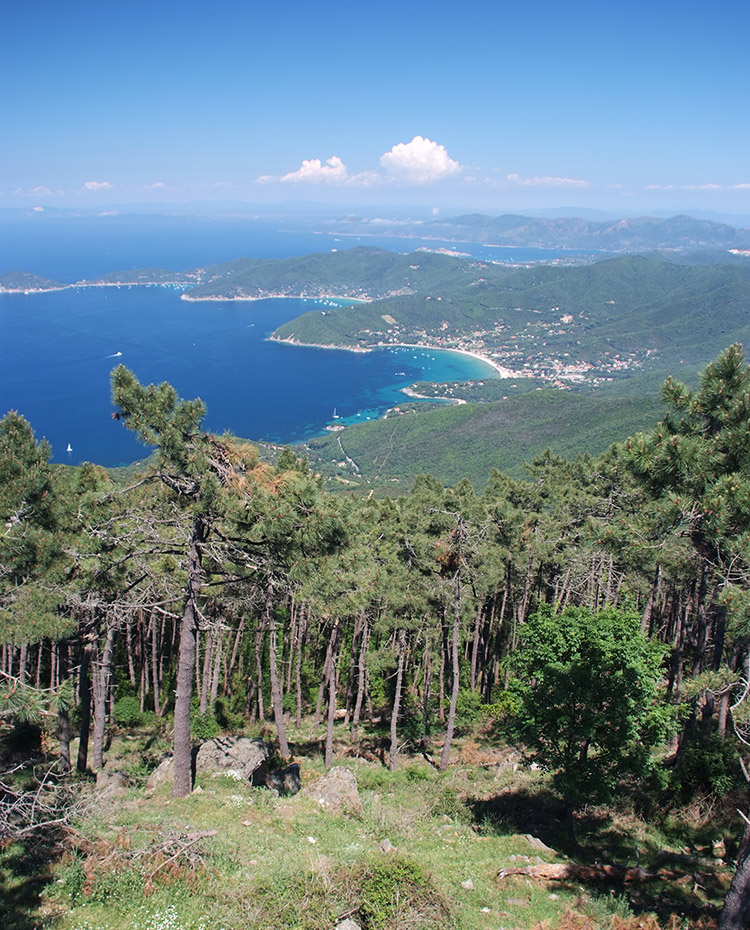A very old legend tells the story of the Tyrrhenian Venus, who was born by rising from the sea abyss. One day her beautiful pearl necklace broke and the pearls fell throughout a wide stretch of sea.
From that same stretch of sea, by magic, the divine methamorphosis of the pearls created the Islands of the Tuscan Archipelago, including wonderful Elba. People are often under the impression that Elba is a small island, however, it is the third largest island in Italy, after Sicily and Sardinia, and the largest of in the Tuscan Archipelago.
The Island is connected to the mainland by several daily ferry and hydrofoil journeys, which cover the ten kilometres that separate the island from the continent in an hour's (half an hour by hydrofoil) sail.
Even though its coastal perimeter only measures 147 kilometers, the island offers a great number of landscapes: romantic fishing villages, groups of houses perched on the hills, old castles, green valleys and enchanting gulfs, together with beautiful sand and gravel beaches, all under a mild climate.
All this and much more can be discovered by visiting Elba, crossing the multitude of paths inside the National Park, hiking with a rucksack on your shoulder, riding a horse or a mountain bike, or sailing the crystal-clear waters on a canoe or a sailing boat.
In a few minutes you can go from the steep cliffs plummeting into the crystal-clear sea, to the granitic massif of Monte Capanne, 1019 metres above sea level.
Already inhabited during the Prehistoric Era, and known for its iron mines at the beginning of Ancient History, Elba, called "Ilva" by the Ligures, "Aethalia" by the Greeks and invaded by the Ligures, the Greeks, and the Etruscans, was under the Roman dominion for many centuries. In the Middle Ages it was controlled first by the Pisans, then by the Appiani and Medici family. From time to time it fell prey to the European powers which left several traces of their dominions.
The Medici left their permanent mark in Portoferraio (the town used to be called "Cosmopoli" in honour of Cosimo de' Medici) as did the Spaniards, who built the Fortress of S. Giacomo and Fort Focardo in Porto Azzurro.
The short Napoleonic Kingdom (1814 to 1825, 9 months and 23 days) left its mark in the Palazzina dei Mulini, in Villa di S. Martino, in the old churches of Portoferraio, in Marciana Alta (Madonna del Monte) and elsewhere.
From a municipality point of view, Elba is divided into eight "comuni": Portoferraio, Campo nell'Elba, Capoliveri, Marciana, Marciana Marina, Porto Azzurro, Rio Marina and Rio nell'Elba.
Such a large amount of historical and cultural wealth, combined with extraordinary natural scenery, make this island a magical and unique place to spend a holiday.

